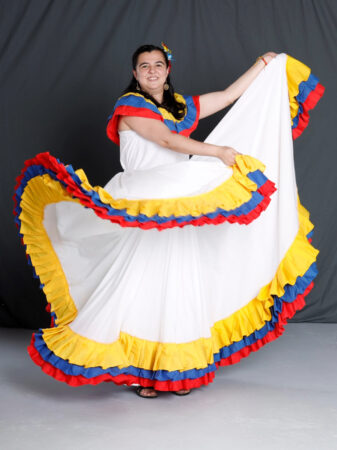At about 5 years old, A. Catalina Vélez-Ortega went to her dad with a question: How do human hearts work? He was the right person to ask. Her dad worked as the only surgeon in her hometown of Dabeiba, Colombia. “He just got so excited,” says Vélez-Ortega.
Not long after, her family received a visitor. It was the town butcher, delivering a pig’s heart. The backyard laundry area quickly became a dissecting station. Using hoses to run water through the heart, her dad pointed out different blood vessels. “Then we dissected everything inside to look at the valves,” says Vélez-Ortega. “He was so happy teaching me.”
That curiosity eventually led her to the United States, where she became a U.S. citizen after earning her doctorate. Today, Vélez-Ortega investigates how proteins can protect against hearing loss at the University of Kentucky in Lexington. She’s also looking at how the shape of hair cells affects hearing sensitivity. In this interview, she shares her experiences and advice with Science News Explores. (This interview has been edited for content and readability.)
What inspired you to start your career?
Some people know what they want to be when they’re kids. I had no clue. Whenever anybody asked me, I just said that I wanted to be a student for life.

When I finally chose a major in undergrad, I picked biomedical engineering. It allowed me to do as much as possible in one degree. A little bit of medicine. A little bit of engineering. After that program, I did an internship in research. We could intern anywhere for one semester without having to take classes. I saw that as my chance to try research. We only had a few research options in Colombia. I interned at the Ohio State University and found that I loved working in the lab.
That’s when I learned that you could earn a salary in grad school. Some graduate programs will even pay for your tuition. I loved the idea of being paid to learn. Again, I didn’t have a specific topic in mind. So I applied to all kinds of engineering programs in the U.S. I didn’t get into any of them. Instead, I was accepted into an immunology program in Colombia.
Eventually, I made it into a Ph.D. program in physiology here in the U.S. [Physiologists study how different parts of the human body work.] That’s when I finally found the field that I liked. Physiology of hearing and deafness let me apply my physics and engineering background to biology. It’s a really good fit for all of my interests. I didn’t plan for it to happen like that. I just really loved learning. And that’s what I still do with my job today.
How did you get to where you are today?
During the first year of my Ph.D. program, I had to rotate between four different labs from at least two different departments. I picked my labs based on which techniques I could learn. I saw it as an opportunity to do things I didn’t often get to in immunology. One of those labs had us developing a fancy imaging technique for the inner ear.
My engineering side loved that. I felt like my previous undergrad experience in coding and electronics could improve this technique. I’ve coded my entire life. When I was three years old, my dad bought a computer. I used to sit next to him, and we would learn how to code together. This was at the same time as I was learning to read Spanish.
That one rotation got me really interested in this whole new field. When I left to open my own lab, I ended up bringing that work on the inner ear with me.
What was it like attending science programs in two different countries?
In Colombia, I didn’t have many of the tools I needed to do experiments. It was a lot more theory. I got really good insights into how machines and experiments are supposed to work.
My education in the U.S. was a little more hands-on. I now had the tools and could learn how to use them. Both experiences complimented each other very well. My experience in Colombia taught me the basics needed for the more hands-on work.
What was a big challenge you faced?
Getting into a Ph.D. program was a big one. Not knowing how to apply as a foreign student made it a lot harder. I can relate to first-generation students who don’t have parents that can help them. Who don’t have someone to explain how college applications work or what college life is like. Nobody in my family attended a school outside Colombia. We just thought things worked the same as they did in Colombia. But the application processes are really different. I now try to help students who are applying from other countries.
What advice do you have for young people?
If you feel like you’re struggling, try to find mentors. A lot of professors and high school teachers are willing to help. Ask them to help you network. I think all of us are willing to take a few minutes to review documents and offer feedback.

